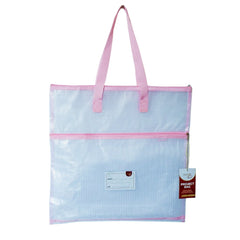Sew a Pillow Cover with a French Seam
Today’s sewing project is a throw pillow cover with a French seam, which is an internal seam that covers the raw edges of the fabrics, giving your project a nice “finished” look on the inside. Even though this pattern for this pillow cover is very simple, it does require three different seam allowances, making the new Madam Sew tool, the Seam Guide Ruler, the star of the show!
Fabric Requirements for the pillow case:
- 1 – 21” square fabric piece
- 2 – 12” x 21” rectangular fabric pieces
- 1 – 21” lining piece (optional)
About The Seam Guide Ruler
Who doesn’t love a multi-use tool? I love the efficiency of a tool that can perform different jobs. When it comes to a well-functioning sewing room, filled with rulers, gadgets, machines, and other notions to help make your sewing easy and beautiful, it can get cluttered with an array of tools doing all different tasks. But today I have a great little tool to show you to help with your sewing projects without taking up any extra space. This Seam Guide Ruler is a 4-in-1 tool that has marking lines for measuring small pieces of fabric, a 45 degree line to help square up blocks like half square triangles, a ¼” corner pivot point for marking binding, and measurements for a magnetic seam guide ranging from 1/8” to 2” to ensure you get the perfect seam every time.
How to Use The Seam Guide Ruler
I'll start by explaining how to use the Seam Guide Ruler before we get to the pillow case. Start with your machine needle and presser foot in the UP position.
Choose the appropriate hole on the ruler for the desired seam allowance. Place the ruler on your machine, under the presser foot, with the hole directly under the needle.
Slowly depress the needle with the hand wheel until it is in the DOWN position, through the desired seam allowance hole, securing the ruler in place.
Carefully place the magnetic seam guide in line with the edge of the ruler.
Raise the needle back to the UP position and carefully remove the ruler.
How to Make the Pillow Case
The magnetic guide should be in place and ready to use for your desired seam allowance. When sewing a french seam accurate seam allowances are important!
Start with the rectangle (envelope) pieces. Fold one of the long edges down toward the wrong side of the fabric 1/8” two times, and sew a 1/8” seam. Repeat with the other rectangle.
Place the 21” square on your workspace, facing right side down. If you are adding a lining piece, place it on top of the square now.
Then place the rectangles on top of the square, with the sewn edges overlapping in the center about an inch, facing right side up. The front square and the back rectangles will be wrong sides together.
If desired, pin in place. Sew ¼” seam all the way around, using a backstitch.
Trim the corners about 1/8”. You can use your seam guide ruler to do this!
Flip the unit inside out, press the seams out and, using a backstitch, sew ½” all the way around.
The French seam is now complete, and the raw edges internal. Flip the pillow cover inside out one more time to see the completed project.
Carefully insert the pillow into the cover and it is ready to use and enjoy!
Carefully insert the pillow into the cover and it is ready to use and enjoy! This is a very easy tutorial for a throw pillow cover with a nice professional looking finishing because of the french seam that is used.
If you are looking for other tutorials to make pillow cases, check out the following blog posts from Madam Sew:
If you have any questions, don't hesitate to leave a question in the comments below!
Happy Sewing!
Laura
Blogging for Madam Sew



















18 comments
I love this pattern and information.
What is a back stitch please?
Thanks, I will try this.